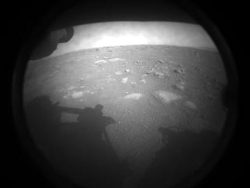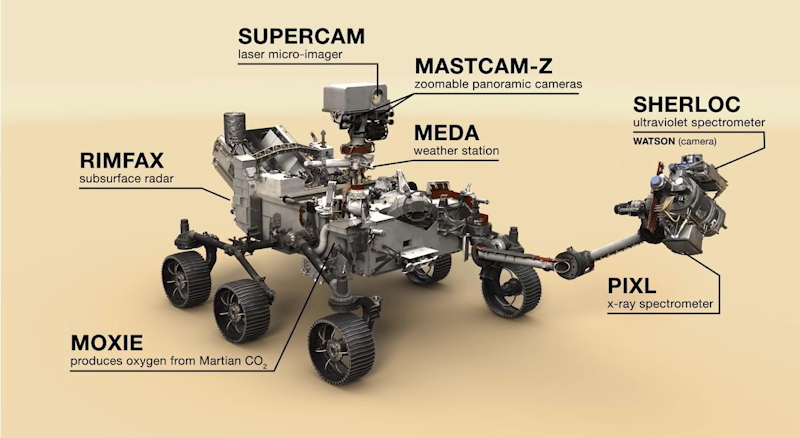
Published
by Rogers Corporation
Advanced Electronics Solutions

Much like its predecessors, the Perseverance is packed full of technology aimed to withstand conditions of space travel and the Mars weather system. Landing, maintaining and returning to Earth requires mission-critical dependability, something that Rogers’ high reliability materials provide. For over 40 years, our advanced circuit materials have been in nearly every US space mission, the Perseverance included.
Advanced Laminates for Mission-Critical Applications
High-frequency specialty laminates enable radars and antennas on these types of rovers and the vehicles that get them there. These radars and antennas aid in communicating maneuver commands with the vehicle, transmitting collected data and other important functions. When these materials perform properly and reliably, they collect data beyond expectations. Now, the hope is they will also return that data, in the form of physical samples, back to Earth.
Using Curiosity as Fuel
The successful landing of the Perseverance Rover is a milestone in space exploration that deserves to be celebrated. As Astronaut Gene Cernan once said, “Curiosity is the essence of our existence,” and it is that curiosity that inspires our engineers to develop such reliable materials, used for real-life applications that would have been merely dreams 10 years ago. We are proud that Rogers’ laminates help enable these pioneering journeys with mission-critical reliability.
Learn more about the Mars Perseverance and Mars 2020 mission on NASA’s mission overview website.
Related Products:
RT duroid Laminates
Tags:
Aerospace & Defense
Published on Feb 19, 2021
